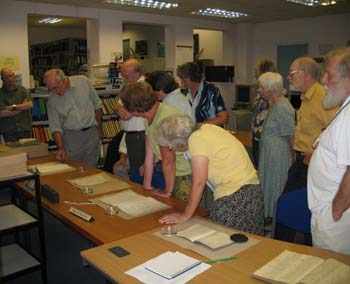Online resource for family and local historians in Cumbria

People in Cumbria wishing to trace the history of their family or village will be able to access an important new guide to historical records online from this month thanks to Lancaster University.
The Cumbrian Manorial Records Project, a £46,000 project funded by the Heritage Lottery Fund, the Friends of Cumbria Archives and the Kirby Trust, is a partnership between the University, The National Archives and Cumbria Archive Service.
Manorial records are the documents created by landed estates and include court rolls, surveys, maps, rentals, accounts and documents on everything from common land to tenancies. Historians from the University have gathered information on all known manorial records for the historic counties of Cumberland, Westmorland and the Furness area, which was part of Lancashire until 1974.
The information goes live this month in the online Manorial Documents Register which is a searchable database of all known manorial records across the UK and is maintained by The National Archives in London. Cumbria is one of the few counties to be included on the Register thanks to Dr Angus Winchester, the Head of the History Department at Lancaster University, who led the project with his colleague Dr Eleanor Straughton.
He said: “Manorial records for Cumbria turn up in record offices and other repositories across the country and the Manorial Documents Register allows you to search to find the whereabouts of all known records for the manor you are interested in.
“It’s a wonderful way to access the information because no matter where the information is held, you can search the database by parish, manor or type of record and it comes up with a list of where all these documents are located.
“It will save local and family historians a huge amount of time as it will no longer be necessary to write to offices across the country to locate a particular document. Manorial records cover so many different aspects of life and are an important source of local information. A manorial court was like a local parliament with decisions taken by a jury of men who made byelaws, acted as a small claims court and a land registry, recording changes of tenancy and so on.”
Some early manorial records survive, providing information about people and places in the century or so before documents such as parish records began to be compiled.
The Cumbrian Manorial Records Project has also created an internet guide to using manorial records on the Lancaster University History Department website. This is an essential tool for anyone using the archives for historical purposes, describing how manors were administered and giving advice on which records are most useful for family and local historians.
www.cumbria.gov.uk/archives
www.nationalarchives.gov.uk/mdr/
www.lancs.ac.uk/depts/history/cmr